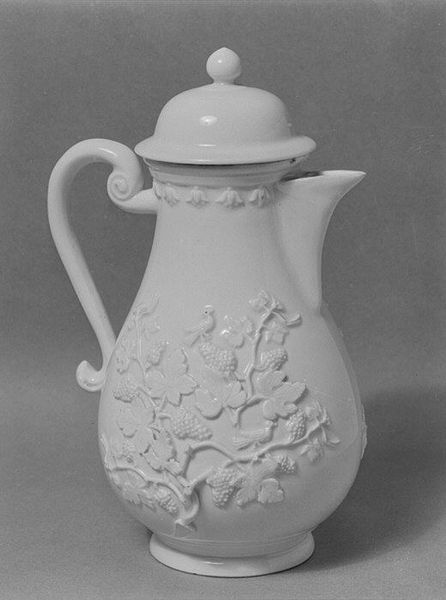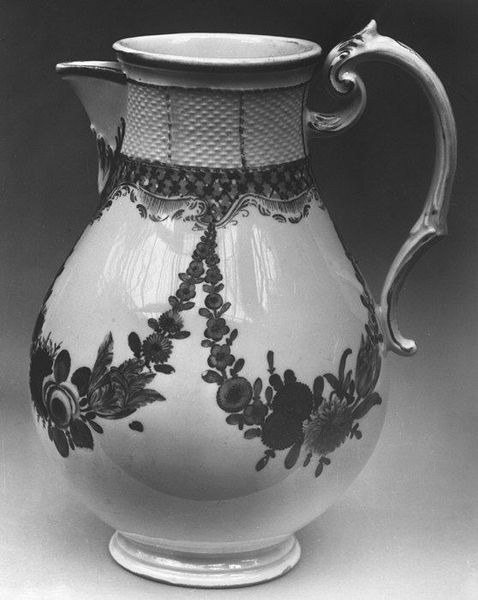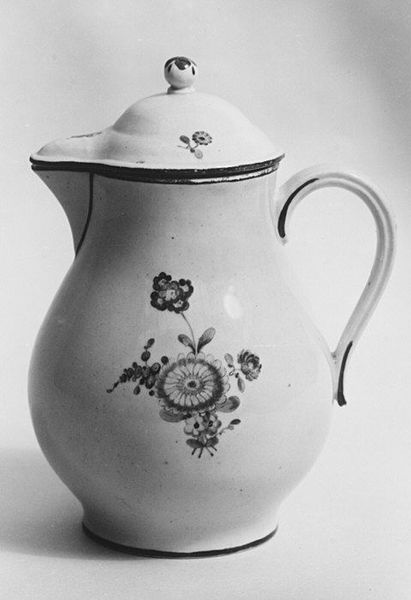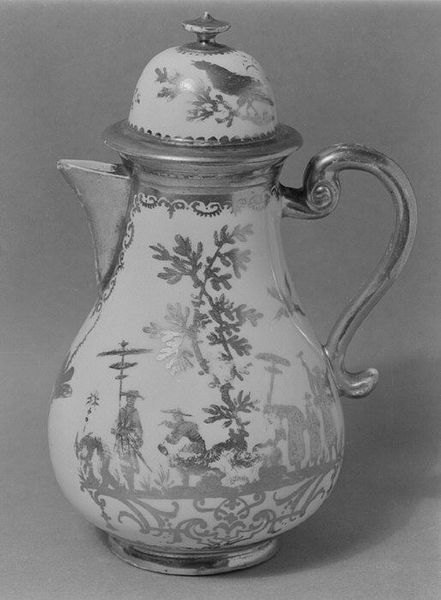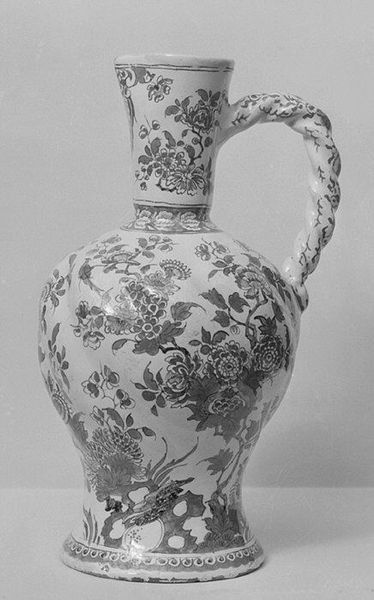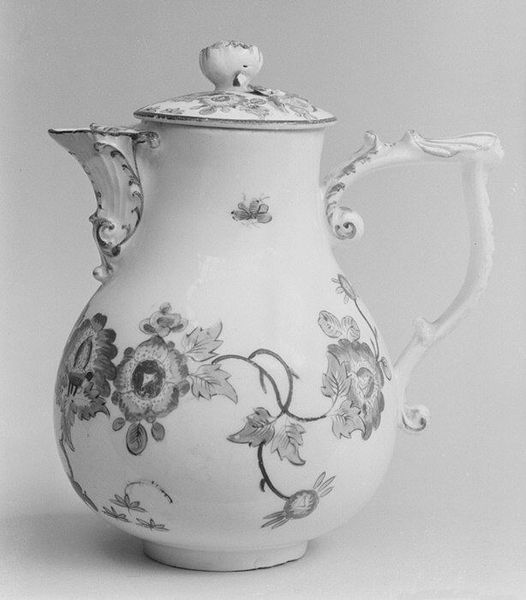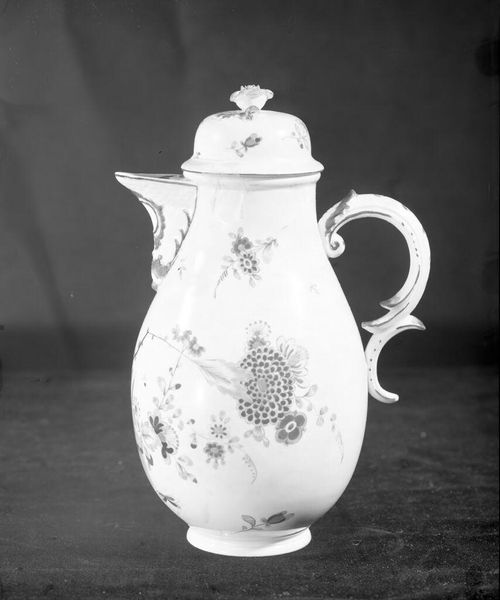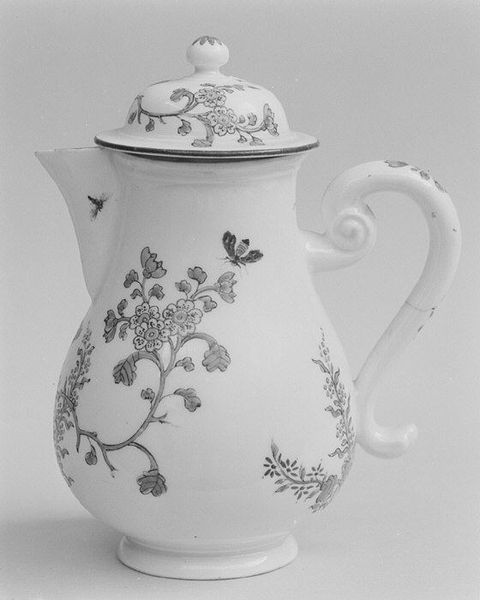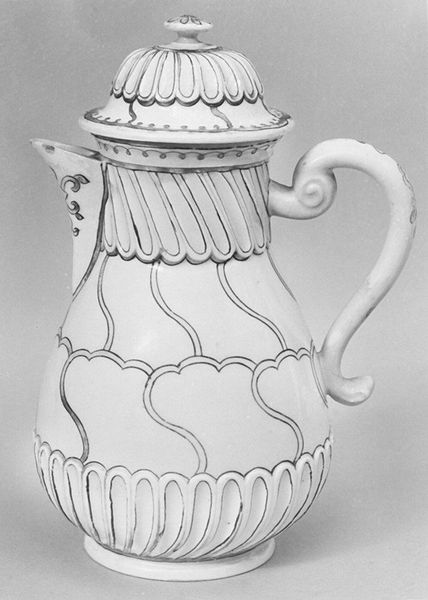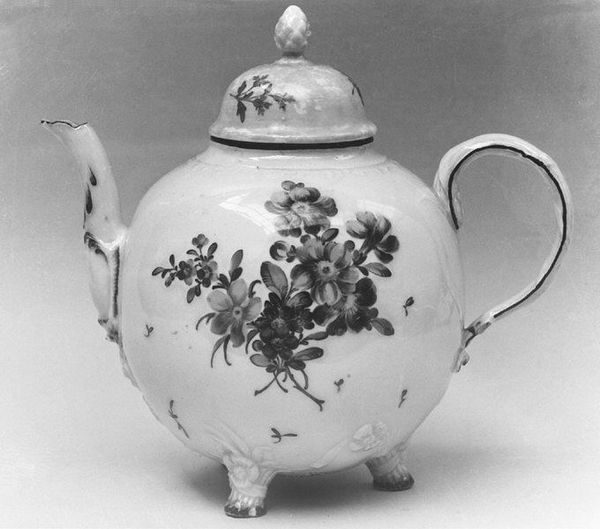
ceramic, sculpture
ceramic
stoneware
sculpture
monochrome
monochrome
Dimensions: 8 1/4 x 7 1/4 x 5 1/4 in. (21 x 18.4 x 13.3 cm)
Copyright: Public Domain
Curator: Here we have a stoneware pitcher created by the United States Pottery Company, dating roughly from 1852 to 1858. You can currently find this piece on display at the Metropolitan Museum of Art. Editor: My immediate impression is that it's strikingly organic, isn't it? The monochrome gives it a somewhat ghostly elegance. The eye is immediately drawn to the delicate relief work. Curator: Absolutely. The form is rather classic, a domestic vessel transformed into something rather more ornate. It reflects the growing industrialization of the period but with an insistent nod to naturalism in design. Editor: Notice how the handle is formed to resemble a branch, extending the thematic integration. The oak leaves and acorns—symbols of strength, endurance, and hospitality—create a rich layer of meaning beyond mere decoration. Curator: Good eye. In a period defined by both rapid industrial expansion and the deep anxieties of pre-Civil War America, pieces like this embodied both aspirational refinement and a retreat into comforting pastoral imagery. Tableware becomes a stage for projecting desired social identities. Editor: It really underscores the idea of bringing the outside in, doesn't it? A visual reminder of nature's bounty at the very center of the domestic sphere. It almost romanticizes rural ideals. Curator: Indeed. The cultural associations of particular visual programs in decorative arts were tightly intertwined with constructions of middle-class values and national identity. How you presented your table communicated values. Editor: And while the design suggests a nostalgic embrace of nature, the industrialized production reveals a progressive outlook that contrasts quite a lot with that sentimentality, perhaps a tension felt through the changing social constructs of the era? Curator: A well-considered point. It's a dialogue between handmade artistry and mechanical reproduction. That conflict is the signature of an era on the brink of profound change, isn’t it? Editor: Considering the historical context gives the artwork greater meaning, wouldn’t you agree? I notice so much I may have missed without any insight. Curator: That’s true, looking beyond aesthetics will add layers to your experience as a viewer, seeing how meaning can transform in this era.
Comments
No comments
Be the first to comment and join the conversation on the ultimate creative platform.

